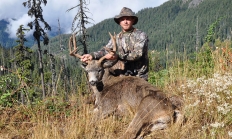Public meetings in Port Orford and Tillamook focused on the commercial nearshore fisheries
NEWPORT, Ore. – The Oregon Department of Fish and Wildlife is holding two public meetings to discuss the commercial black and blue rockfish and nearshore fisheries. The meetings will be held in person with virtual or phone-in options Sept. 9 in Port Orford and Sept. 11 in Tillamook. ODFW commercial…










